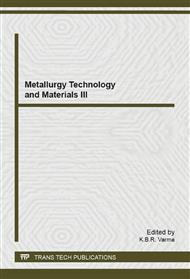p.7
p.12
p.16
p.21
p.25
p.31
p.36
p.40
p.44
The Molecular Simulation Study of Optimum Blending Ratio for PVDF/PVC Membrane
Abstract:
The PVDF/PVC blending membrane has a certain application in the field of sewage treatment. In this paper, the simulation study for the blending ratio of the PVDF/PVC membrane has been carried on, which has an influence on the membrane’s ability of sewage treatment. Firstly, the membrane models were constructed via Amorphous Cell module of MS (material studios) 6.0. Secondly, the optimization processes were achieved via Minimizer and MD (Molecular Dynamics) method of the Discover module. Lastly, the diffusion coefficients D was calculated indirectly through the Mean square displacement (MSD) getting from Forcite module and the solubility coefficients S was calculated indirectly through the adsorption isotherm getting from Sorption module. It was found that the membrane had a best ability of sewage treatment when the content of PVC was 5% (mass fraction). And the calculated result was well consistent with experiment result.
Info:
Periodical:
Pages:
25-30
Citation:
Online since:
June 2014
Authors:
Keywords:
Price:
Сopyright:
© 2014 Trans Tech Publications Ltd. All Rights Reserved
Share:
Citation:


